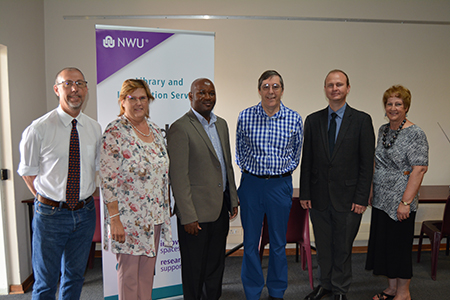Researchers are architects of innovation. However, their research findings will only impact the world if they are effectively shared with the rest of the academic community and the world.
With this in mind the Library and Information Service team at the North-West University (NWU) recently hosted an Open Access Week across its three campuses.
Until now, the sharing of such research information has traditionally been facilitated by peer-reviewed closed journals which can only be accessed by means of a paid subscription.
The dawn of open access (OA) as a viable model for research publication not only offers a cheaper alternative to traditional printing and subscription costs, but also a free-flow of information between researchers and their audience.
Choosing between OA and traditional journals does however pose a challenge to researchers since both platforms come with unique challenges and benefits.
Sharing knowledge freely
The Open Access Week aimed to highlight the opportunities that the internet afford researchers by introducing new platforms for disseminating information, says Hendra Pretorius, director for client services within the Library and Information Services Directorate.
She explains that OA has been the subject of ongoing discussion among academics, librarians, governments and publishers since the first statements on OP were published. These were the Budapest Open Access Initiative (2002) and the Berlin Declaration on Open Access to Knowledge in the Sciences and Humanities (2003).
“Rising journal costs and lower library budgets force us to seek innovative alternatives to share research results,” explains Hendra. She adds that the week-long emphasis on OA focused on how free online content can impact and even add value to the reputations of researchers and the university through increased citations.
NWU campuses get OA equipped
During the launch of the initiative at the campus in Vanderbijlpark, Prof Jako Olivier explored the multi-literacies in support of equitable open knowledge. According to Prof Olivier, who is the NWU UNESCO Research Chair in Multimodal Learning and Open Educational Resources, multi-literacies are an essential part of knowledge sharing, especially considering the differing levels of proficiency in English in South Africa.
Dr Tony Mays, education specialist in open and innovative schooling at the Commonwealth of Learning, was of the opinion that open educational resources (OERs) allow anyone to legally and freely copy, use, adapt and re-share the materials.
He explained that OERs are educational materials that are in the public domain or introduced via an open licence. They range from textbooks to curricula, syllabi, lecture notes, assignments, audio, video and animation. In his view, OERs offer a viable platform in the quest to decolonise the curriculum and increase access to ensure success.
Talking from a researcher’s perspective, Dr Tony Lelliott, programme specialist at the South African Institute for Distance Education (SAIDE), explained how one goes about deciding on a reputable OA journal. He mentioned aspects such as the reputation of the publisher and whether or not the journal is listed within an academic database, has links to Google Scholar and offers an archive functionality.
At the campus in Mahikeng, Siviwe Bangani of the NWU’s Library and Information Service team talked about the benefits and challenges of OA to legal knowledge in South Africa. The common law principle of open justice applies when dealing with OA content and contributes to openness as a constant factor within the South African legal system.
A panel discussion on decolonising the curriculum and using equitable open knowledge sources took place at the campus in Potchefstroom. The discussion saw Prof Olivier focusing on how localised open educational resources link up with the NWU’s strategic Teaching and Learning Strategy 2016-2020: ‘The North-West University will engage in a systematic process of curriculum transformation and renewal in order to equip its graduates to address the challenges of the twenty-first century society.’
Juan Steyn, project manager at the South African Centre for Digital Language Resources (SADiLaR), spoke on the role of national research infrastructures in promoting OA sources. His presentation further explained how SADiLaR contributes to raising awareness and promoting the use of OA in its broadest definition.
The discussions across the campuses opened researchers’ eyes to the benefits of OA in comparison to traditional academic publishing, and hopefully empowered them to make wise publishing choices.

Attendees during the launch of the NWU Open Access Week are from left Dr Tony Mays, Hendra Pretorius, Dr Matthew Moyo, Dr Tony Lelliott, Prof Jako Olivier and Martie Esterhuizen.
